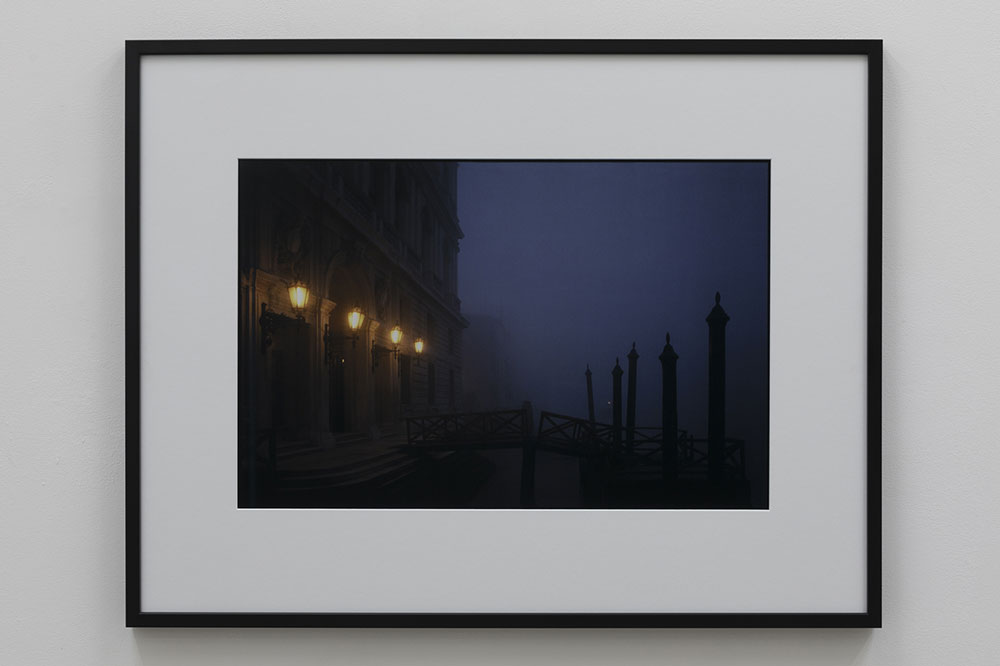The Mind's Eye - The Photographs of Derek Parfit | Narrative Projects
Derek Parfit travelled to Venice and St Petersburg on holiday each year for decades. He took many obsessively-composed, haunting photographs of the architecture there, always in low winter light. They’re the subject of this small but smart show, on right now at Narrative Projects. He wasn’t a pro photographer, though: his day job was… philosophy.
It’s hard to think of a philosopher who left behind a visual archive, and it’s equally hard to decipher Parfit’s philosophical views from these moody, misty photos. Actually, it’s very very hard, for this reader at least, to decipher Parfit’s philosophical views by reading about them!

Better to look at the pictures then. All photos in the show are untitled. They are modest in scale, personal-seeming, yet very formal and rigorous in composition. There is a blue wash over many of the photographs - evidence of Parfit’s tendency to post-process his work: he was a happy early adopter of Photoshop.
Parfit travelled solo, but it’s certainly very rare to see people in his pictures. He preferred buildings, especially architectural follies and detailing on spires, water, streetlamps and snow. The only human presences are two gondoliers in silhouette on the Venetian lagoon, a face on a poster in a shop window - Venice again - and ant-like clusters of visitors around the Winter Palace in St Petersburg. And, in one, a photographer with a tripod. Part of the post-processing of these photos was removing people from them, apparently.
He returned to some scenes again and again - at different times, or perhaps different years. There’s also a a couple of photographs of Oxford, where he taught. These seem to have been taken in winter too. In fact, I’m pretty sure they were: one of the standout details in this fascinating Financial Times piece on Parfit is that he stopped taking photographs around the year 2000 because he thought “the quality of the snow was getting worse”.
It’s super-tempting to speculate what drove the philosopher-photographer to undertake his obsessive winter missions was his aphantasia: his inability to form mental images or visualise things. But that seems cheap. Maybe it’s better not to try to impart meaning to these cold, rigourous yet dreamy scenes. Maybe it’s better just to look and enjoy.
That impression was reinforced in an event I attended a couple of weeks after seeing the exhibition, at The Photographer’s Gallery. Janet Radcliffe-Richards, also an Oxford philosopher and Parfit’s widow, was emphatic about separating the photography from the philosophy; trying to find meanings in the former from close reading of the latter. In fact, she suggested her husband saw himself as a “critic” rather than an “artist”. His sole motivation for taking the photographs was that he found the scenes beautiful, and wanted to make the most beautiful pictures of the scenes possible.
She was also pretty tough on Parfit’s aphantasia: following diagnosis, her deeply perfectionist husband “latched on” to it as an explanation for his not being able perfectly to recollect visual scenes. “I think it’s a bit of a myth that has grown up around aphantasia and his photography,” she added.
This isn’t to take away the man from the work, though. One other thing about Parfit I hadn’t known is that he was (privately) “scathing” about religion - a reaction to his deeply religious childhood, during which he’d wanted to be a monk. Which might prove an explanation for the fact that his churches - in Oxford, St Petersburg and Venice - tend to be far in the background, shrouded in mist.
Parfit wasn’t exactly reclusive about his photography either, handing out copies to friends, and even calling up the Met in New York to ask if they would put them in a show. Radcliffe-Richards didn’t mention their response, but she did recall the feedback from one London gallery after Parfit dropped off some prints there.
“Nice holiday pictures.”
The Mind’s Eye - The Photographs of Derek Parfit is at Narrative Projects (London). 21 March - 30 July 2018.